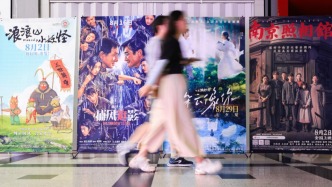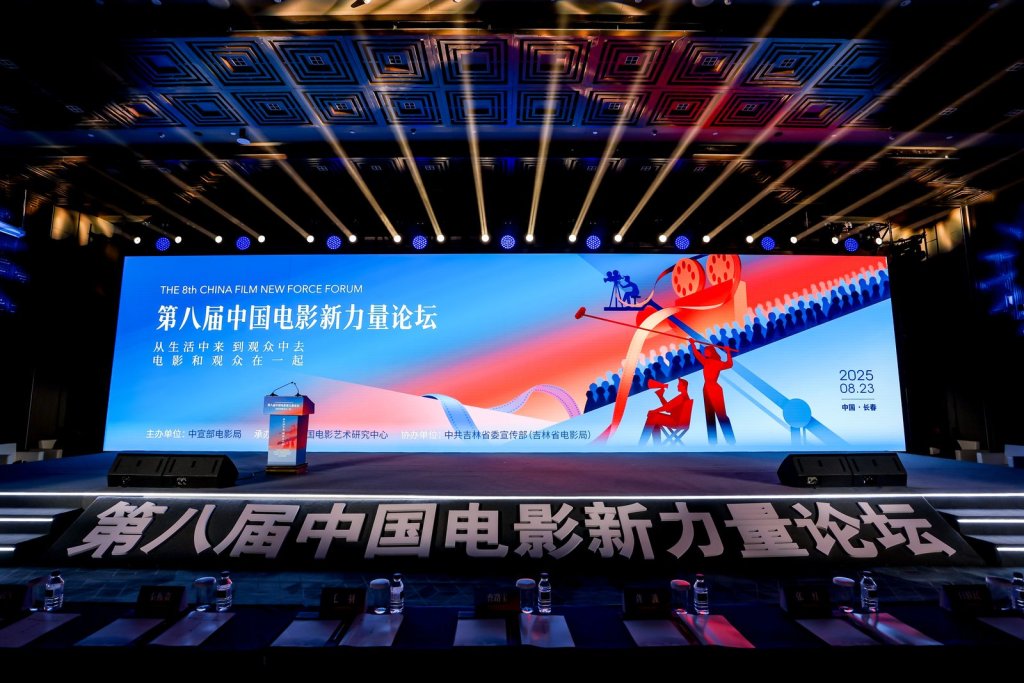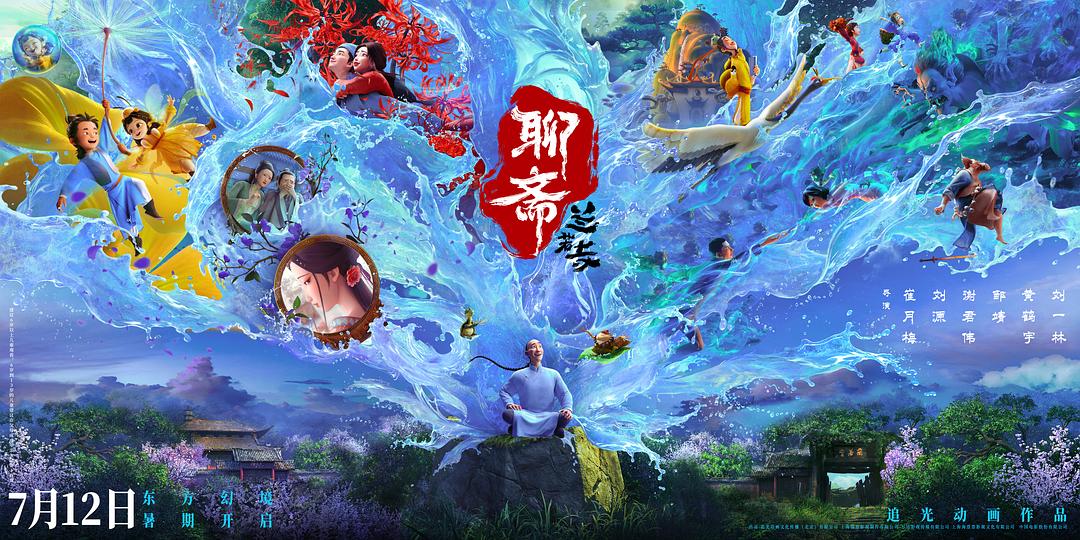
The domestic animated film "Liao Zhai: Lanruo Temple" was officially released on July 12, and won the daily box office championship for three consecutive days in the first half of this week.
This animated masterpiece, which is "the largest investment, the largest scale, the most difficult and the most creative" in history, is based on the main line "The Story Under the Well" of Pu Songling's night visit to Lanruo Temple, connecting the five chapters "The Taoist of Laoshan", "Princess Lotus", "Nie Xiaoqian", "Painted Skin" and "Daughter of Lu Gong". It uses a variety of styles such as witty humor, childlike innocence, poignant beauty, youthful romance, etc. to unfold the oriental world of "Strange Stories from a Chinese Studio" written by Pu Songling, through the warmth and coldness of human feelings in the vicissitudes of life.
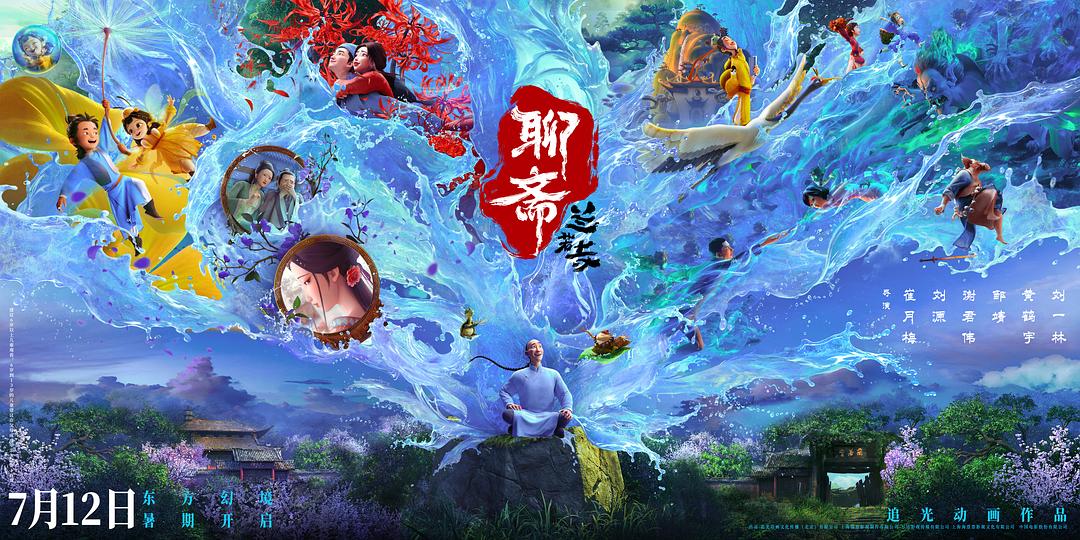
Poster of "Liao Zhai: Lanruo Temple"

Cumulative box office exceeds 100 million poster
Since the team created its first work, Light Chaser Animation has been committed to "a Chinese team telling Chinese stories for Chinese audiences". In recent years, the beautiful scenery of the prosperous Tang Dynasty in "Chang'an 30,000 Miles" and the lingering charm of the Song Dynasty in "White Snake: Floating Life" have left a deep impression on the audience. This time, the movie "Liao Zhai: Lanruo Temple" continues the consistent cultural heritage mission of the series.
During the release of the film, Song Yiyi, the producer of "Liao Zhai: Lanruo Temple", accepted an exclusive interview with The Paper, interpreting the creative logic and industry inspiration behind this work from all aspects, from the ingenuity of IP adaptation, the integration of contemporary perspectives, to the practice of industrialized production and industry observations.
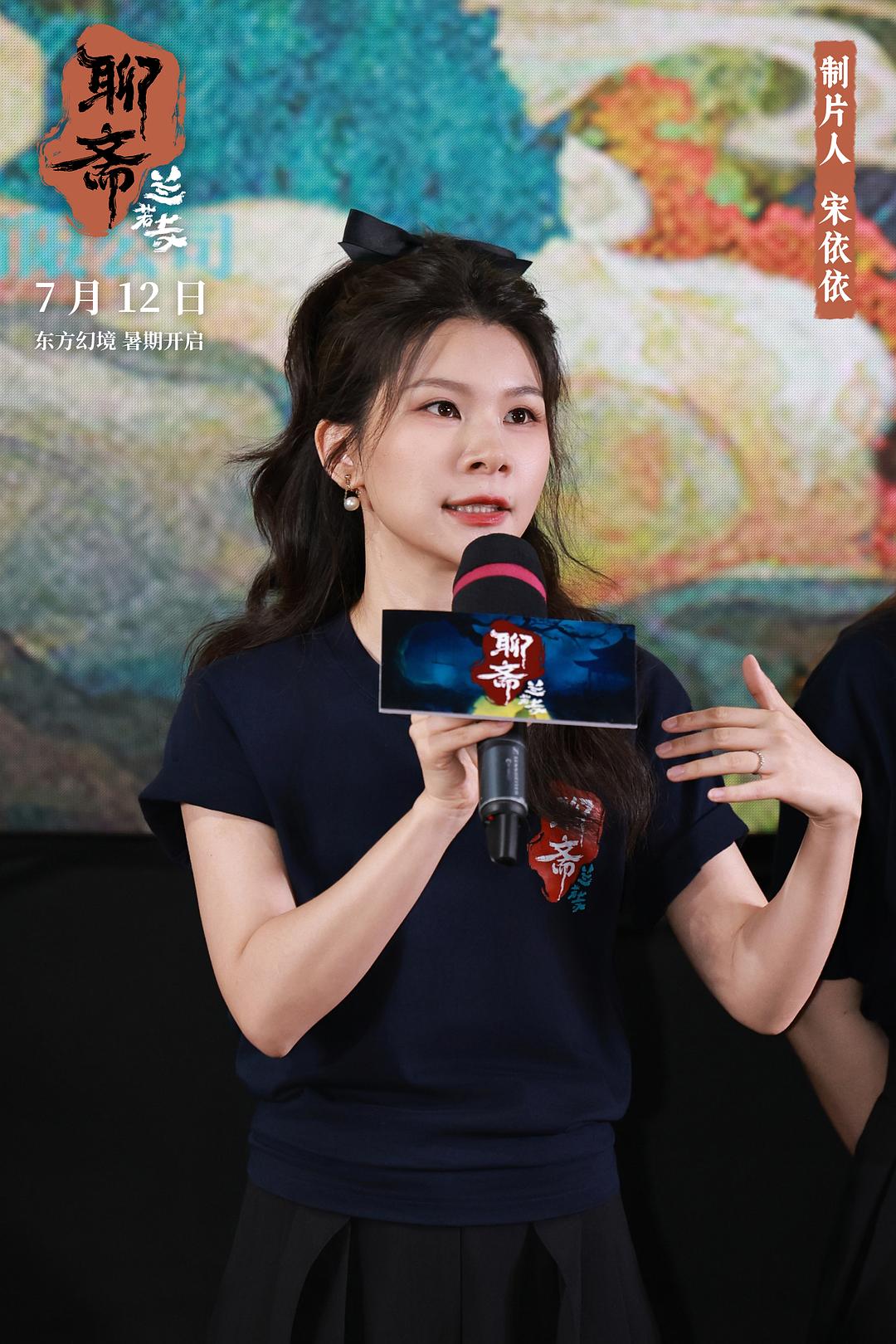
Producer Song Yiyi
Digging out 5 stories of "emotional progression" from 491 strange stories
The extraordinary imagination of Pu Songling's "Strange Stories from a Chinese Studio" provides fertile soil for animation creation. Producer Song Yiyi said that the team was very excited when the idea of choosing "Strange Stories from a Chinese Studio" as the object of adaptation was proposed. The high degree of adaptability of the elements of strange stories and the animation carrier, the fantasy settings of human demons and ghosts, and the wild imagination are far more advantageous to be presented in animation than in real shooting. The first step of deciding to make "Strange Stories from a Chinese Studio" into a movie made the team "dazzled". Five chapters were carefully selected from 491 bizarre stories, which not only retained the classics well-known to the public, but also discovered new chapters that are little-known, so that the final film will be presented as a "story collection" that is both intimate and fresh.
Well-known stories such as "Painted Skin", "Nie Xiaoqian" and "The Taoist Priest of Laoshan" were included first. They have their own audience base and can quickly establish emotional connections; and relatively unpopular chapters such as "Lotus Princess" and "Daughter of Lu Gong" were also given a vivid display because of their unique story temperament and emotional expression.
For classics like "Nie Xiaoqian", innovative perspectives are the key to adaptation. The story is set in the Republic of China, and the emotions between Ning Caichen and Xiaoqian that transcend the barriers between humans and ghosts are even more precious in the turbulent times; "The Taoist of Laoshan" is a bold breakthrough in form, presented in the style of intangible cultural heritage felt crafts. The soft texture complements the light-hearted and humorous tone of the story, retaining the "warning of the greedy" in the original work, and revitalizing the classic with a new visual language.
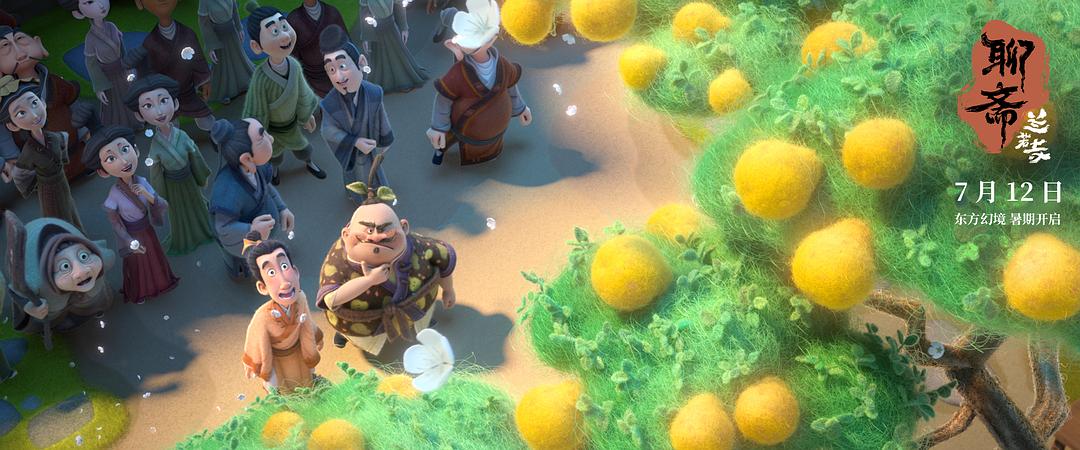
"Laoshan Taoist" is presented in the style of felt, an intangible cultural heritage craft
The adaptation of unpopular chapters focuses on "telling the story thoroughly". The switching between dreams and reality in "Lotus Princess" is very suitable for animation performance. Director Xie Junwei incorporated Tang Dynasty architectural elements and the characteristics of the insect world into his creation, making Dou Xu's beehive dream both fantastic and rooted in tradition. The team tested countless versions to make the hexagonal beehive with a natural "sci-fi" visual feel both in line with imagination and ancient charm.
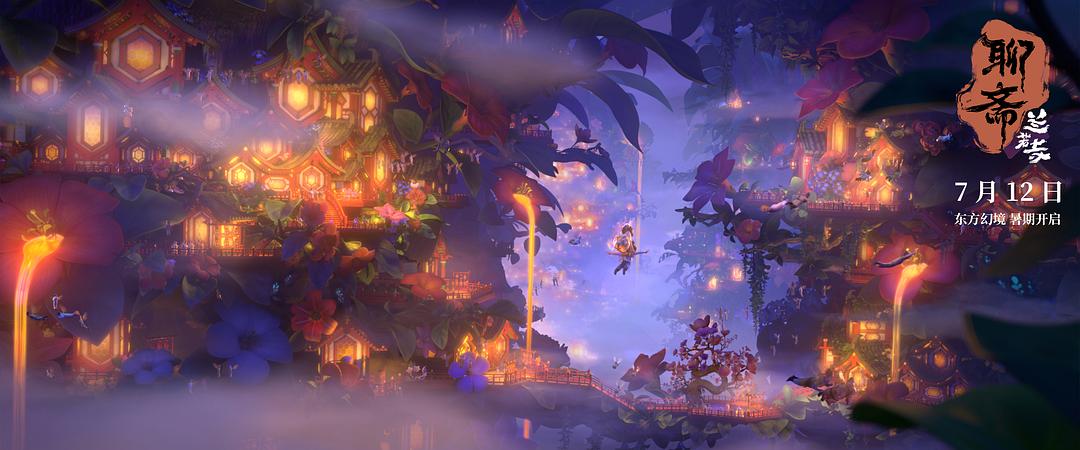
The hexagonal honeycomb is fantastic yet still retains its ancient charm
If one examines carefully, there are many surprise easter eggs in the film. The "Laoshan Taoist" chapter restores the classic image of Chang'e flying to the moon in the Colorful Feathered Dress Dance. The overall atmosphere refers to the "Four Poems of Huaqing Palace" by the Tang Dynasty poet Zhang Hu, and professional dancers were invited to perform motion capture to create a unique poetic beauty that is ethereal and dreamy. The "Lotus Princess" chapter draws on elements of Tang Dynasty architecture and Fujian Tulou to construct the Honey Kingdom, a fantasy world full of childlike fun. In the "Painted Skin" chapter, the team was inspired by the clear and elegant Song Dynasty paintings and the freehand performances of traditional opera. The aesthetic style is classical and poignant, with long-lasting meaning.
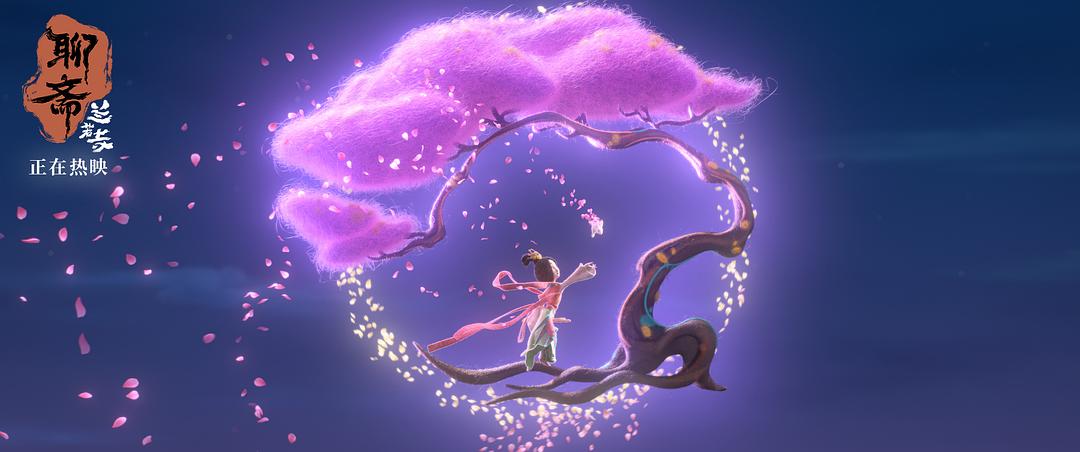
Feather Dance
At present, different chapters of the film have their own "fans", and viewers who have watched the film will also discuss their views on different chapters on the Internet. The text of "Strange Stories from a Chinese Studio" itself has a broad space for exploration, and the genre characteristics of animated films determine that they will inevitably attract family audiences. In order to ensure that audiences of different ages can find touching stories and resonance points in it, the film was initially positioned to take into account the feelings of audiences of different ages - children can see a fantasy and interesting fairy tale, young people can experience the romance of love and adventure, and adults can appreciate the philosophy of life contained in it.
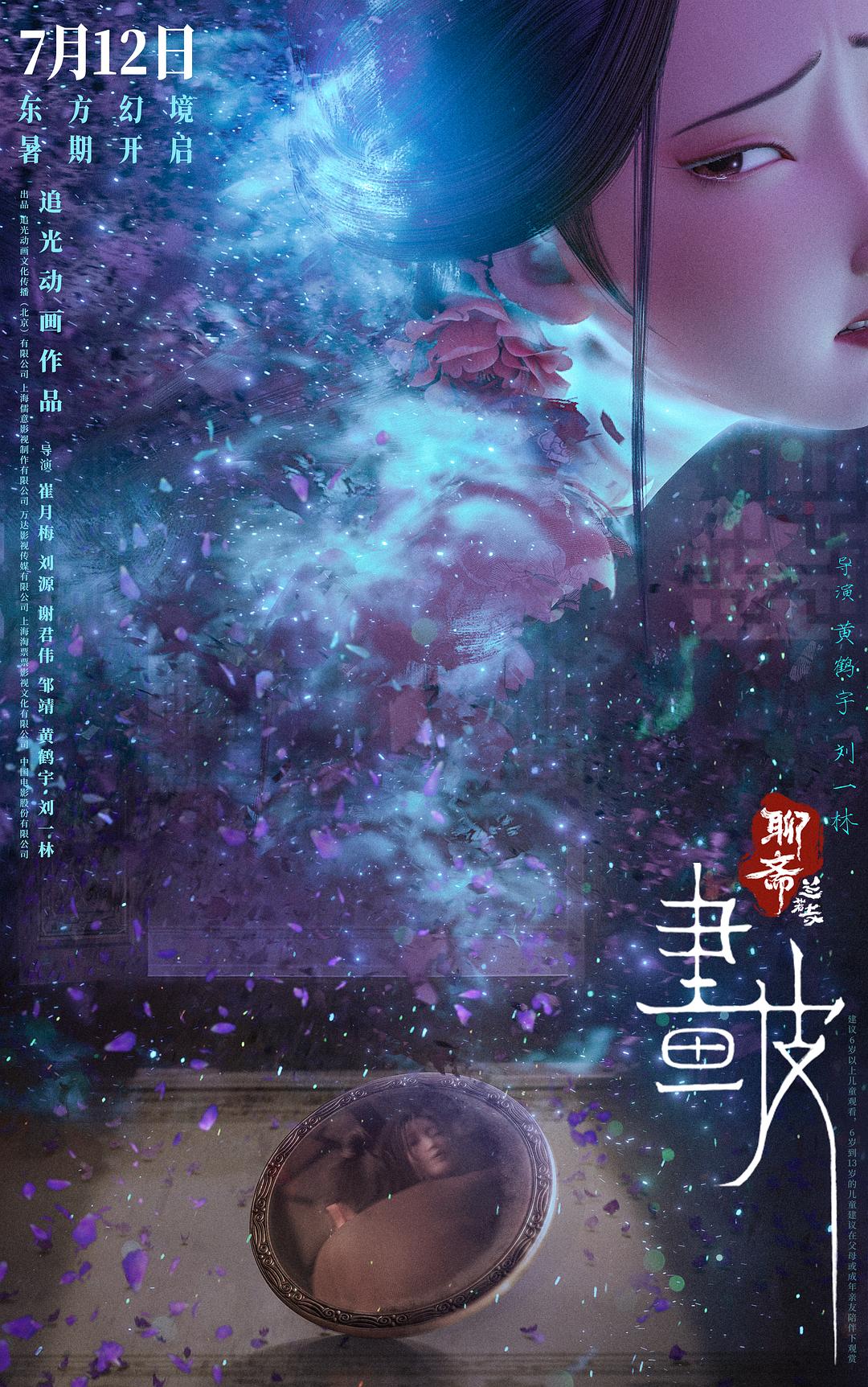
"Painted Skin" is the most ghostly chapter in the film
The film starts with a simple and easy story, and then it leads the audience's emotions step by step. "We hope to be able to tell a few stories, from the feelings of innocence, to slowly facing love, to the problems faced after marriage and family, and finally a beautiful two-way rush. We hope that through this process, the audience can slowly experience these feelings." Director Xie Junwei said in an interview before, "Mr. Pu Songling's thoughts on that era, there are praises, compliments, and satires. There are many unrestrained worlds in it. We have so many directors, just want to present these different chapters in our most extreme way."
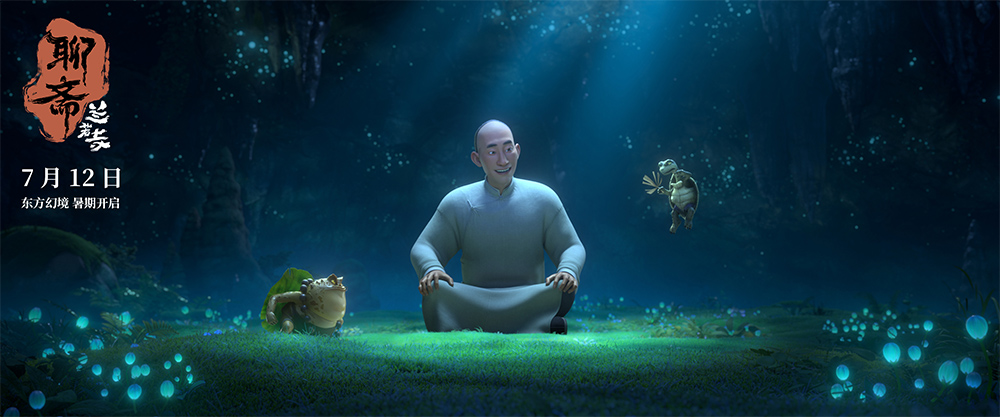
Pu Songling tells stories in the well
Examining traditional culture from a contemporary perspective: a young team’s “dialogue between the past and the present”
In 2023, Song Yiyi's last film as a producer, "30,000 Miles of Chang'an", successfully opened up a new narrative path for domestic animated films, opened up a new series of "new culture" for Light Chasing Animation, and brought new inspiration to the industry.
"When telling stories about the ancients, I hope to let the audience see the empathy points with the present," Song Yiyi recalled. The collective resonance caused by the "light boat has passed through thousands of mountains" in the film was a model of this "dialogue between the past and the present": the ideals and struggles of Li Bai and Gao Shi ultimately settled on the common experience of "overcoming difficulties" of contemporary people. With this experience, the young team of "Liao Zhai: Lanruo Temple" naturally injected the current social emotions and value concerns into the texture of the strange story when adapting "Liao Zhai Stories".
It is reported that the entire behind-the-scenes production team is very young, with an average age of less than 30 years old. Young people's views on the traditional narrative in the film are not "for deliberate innovation", but naturally carry some freshness.
For example, in the exploration of the "blank space left in traditional texts", the narrative of Strange Stories from a Chinese Studio is mostly from a male perspective, while Strange Stories from a Chinese Studio: The Lanruo Temple allows female characters to step out of the framework of "accessories".
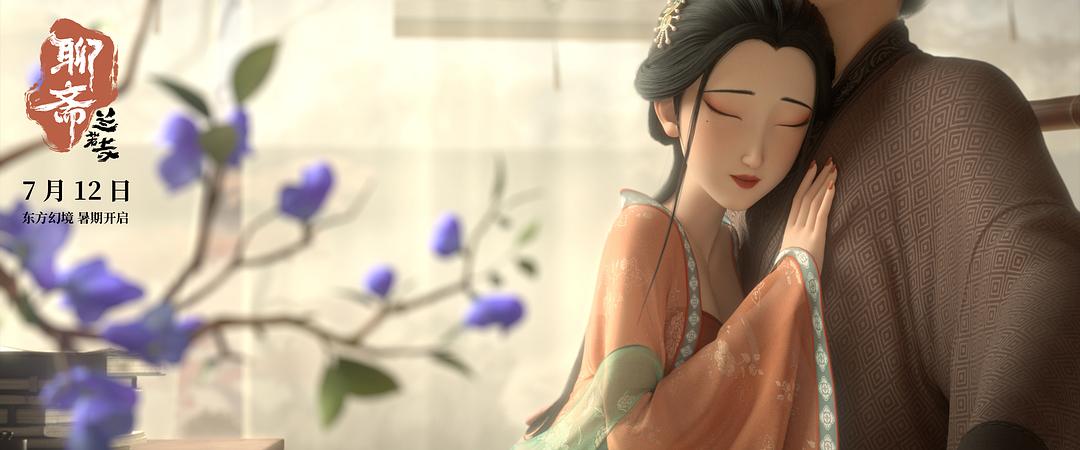
Stills from Painted Skin
The chapter of Painted Skin shifts the focus from Wang Sheng in the original novel to his wife Chen. Director Liu Yilin hopes to "see from this woman her unwillingness, entanglement and efforts in facing the difficulties of marriage. The difficulties faced by couples after living together for a long time are propositions that exist in every era." Chen's "disgusting" line in the film tells of her awakening and her attitude. This delicate observation of intimate relationships obviously carries the emotional imprint of contemporary people. The original novel of Painted Skin is full of strange stories, and the adaptation focuses on "identity recognition" and "self-acceptance": the painted skin monster desires to find a home through the "beautiful skin", while Chen seeks herself in the exhaustion of marriage. The dilemmas of the two are echoed in the "struggle to break free from the expectations of others."
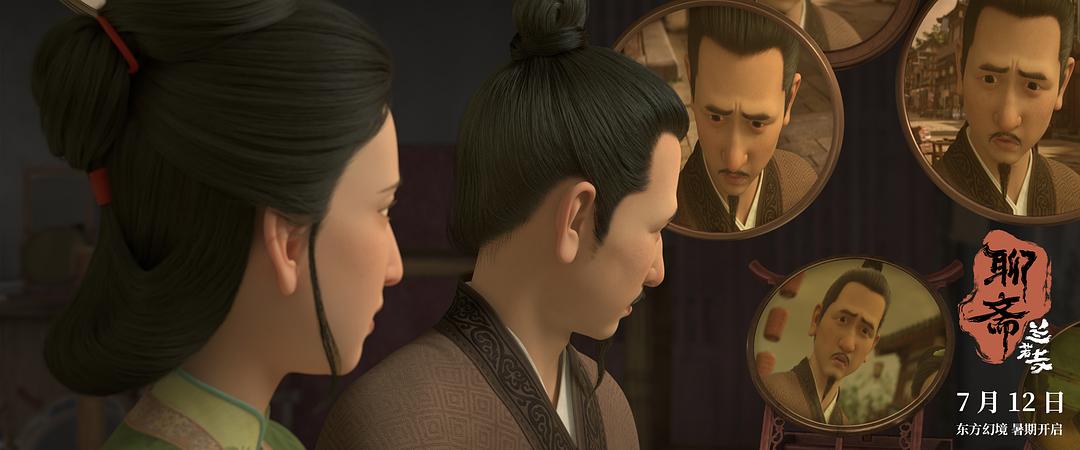
"Painted Skin" reflects on marital relationships from the perspective of the original wife
Song Yiyi told The Paper that the two female directors who joined the creation of "Liao Zhai: Lanruo Temple" also brought a delicate perception of the inner world of women. For example, in "The Taoist Priest of Laoshan" directed by Cui Yuemei, the role of the wife is no longer a simple "dissuader". Her sobriety and pragmatism provide a solid space for the performance of family life, and also serve as a contrast to the husband's speculative mentality.
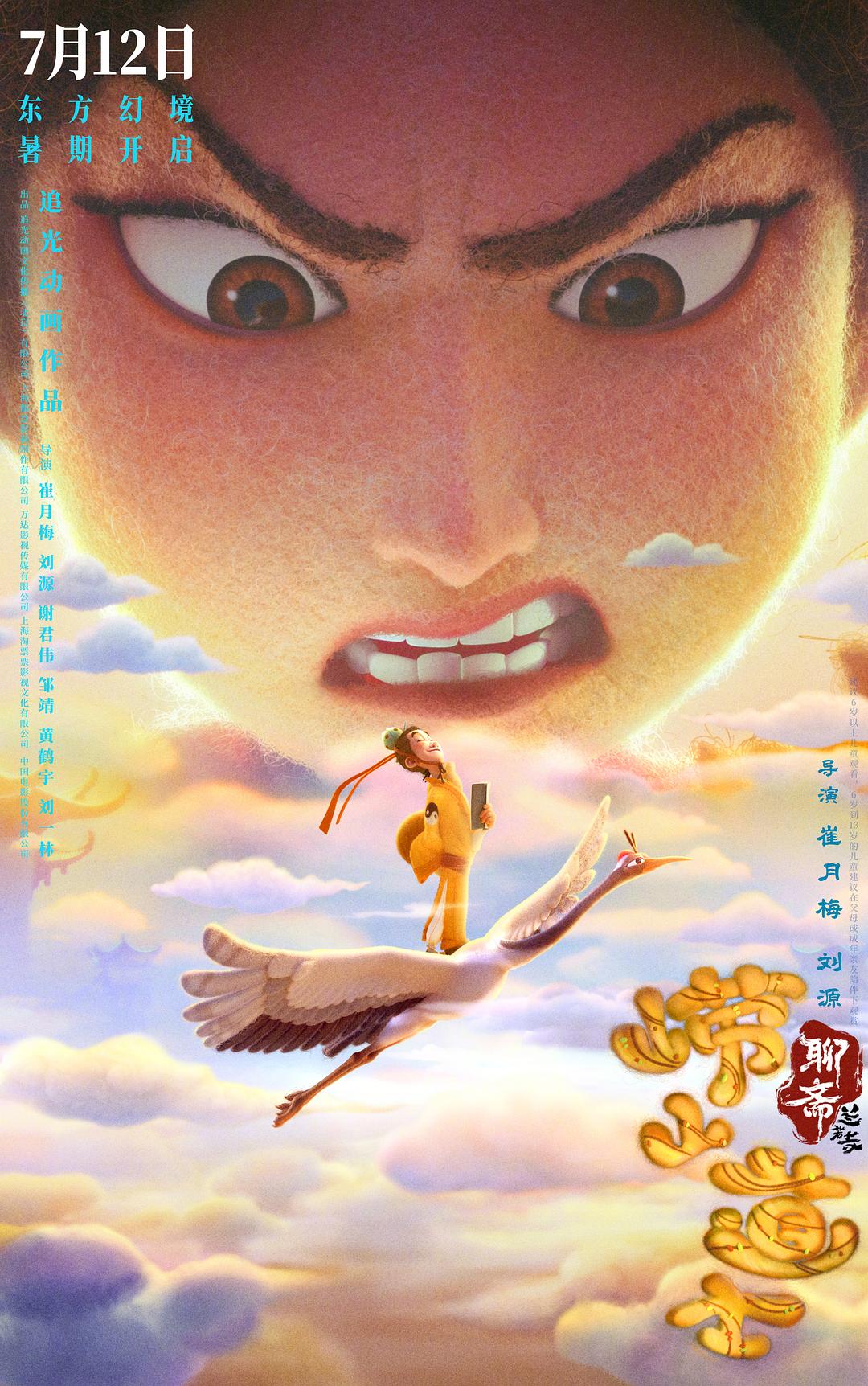
Poster of "The Taoist of Laoshan"
For example, in "The Lady of Lu Gong", the Lady of Lu Gong is given a "sassy and proactive" character. She saves her lover first and then goes to the underworld, breaking the "male saving female" routine in traditional stories. Director Liu Yuan said in a previous interview, "I hope to present a 'two-way' love, which is closer to the expectations of young people today for emotional relationships."
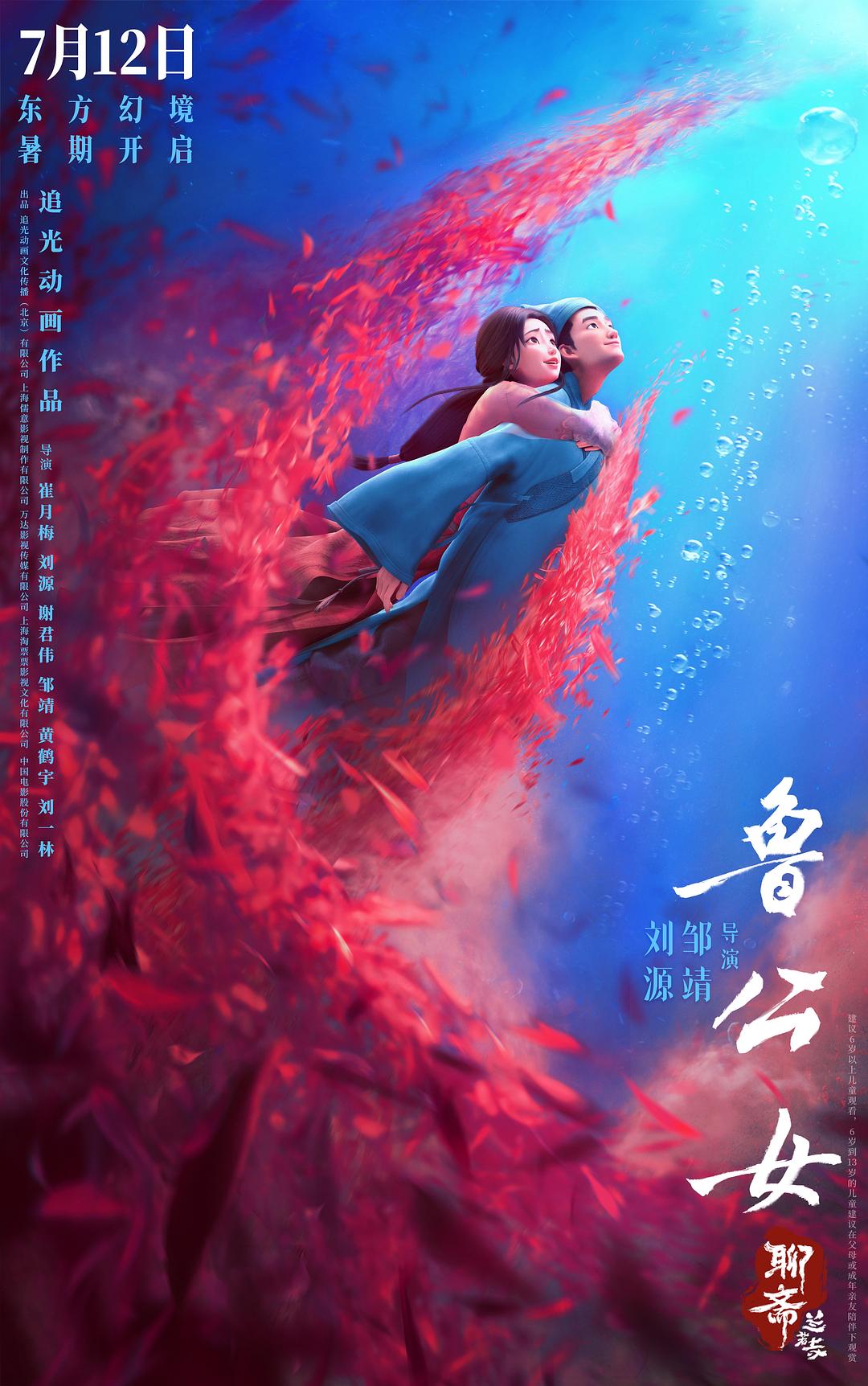
Poster of "Daughter of Lu"
"In that era, Strange Stories from a Chinese Studio used the shell of strange stories to explore human nature, which was very forward-looking in itself." In Song Yiyi's view, the underlying color of this creative logic is the team's belief in the "vitality of traditional culture". "Whether it is "Chang'an 30,000 Miles" or "Liao Zhai: Lanruo Temple", the core is to grasp the unchanging things - the pursuit of truth, goodness and beauty, and the cherishment of emotions." At the same time, Song Yiyi talked about the deep emotional connection that "Liao Zhai: Lanruo Temple" attempts to generate with contemporary people, which is condensed in a "sense of relief". "I personally like the sense of relief at the end of the film. After watching the joys, anger, sorrows and joys, the audience can continue on the road like ordinary people. No matter the ups and downs, right or wrong, many things will pass, and everyone can become part of a wonderful story."
Multiple directors worked together to create multiple chapters, and the producer became a "time management master"
Six stories "fighting side by side" also pose new challenges to the industrialized production process. Six creative teams advanced in parallel, and six directors collaborated across units. During the four-year production cycle, from the mass production of felt textures to the visual effects of the Huangquan scene, from the "half-hour war" of meeting scheduling to the "customized tilt" of resource allocation, producer Song Yiyi joked that she had been trained to be a "time management master" and a "water balance master".
Since its establishment in 2013, Light Chaser Animation has been committed to creating animated films with Chinese cultural characteristics and world-class standards with the spirit of craftsmanship. In the long-term development process, Light Chaser has established a unique talent training model. It focuses on discovering and cultivating talents internally, giving employees ample growth space and practical opportunities, so that team members can gradually grow in the project. The many directors of "Liao Zhai: Lanruo Temple" are all powerful witnesses of Light Chaser Animation's talent training results.
Cui Yuemei, the director of The Taoist Priest of Laoshan, is a veteran of Light Chaser Animation. As the character design director, she has designed almost all the characters in Light Chaser's past works. Huang Heyu, the director of Underground Story, is the animation director of Light Chaser and is very familiar with the entire process of the company. Xie Junwei, the director of Lotus Princess, and Zou Jing, the director of Nie Xiaoqian, Lu Gongnu, and Underground Story, are the directors of Chang'an 30,000 Miles. Both of them have participated in the production of many Light Chaser Animation works. Liu Yilin, the director of Painted Skin, and Liu Yuan, the director of Lu Gongnu, both came from "storyboard" backgrounds and have a precise control over the rhythm and emotions of the story. Song Yiyi said that the advantage of creators growing up in the same creative system is that everyone has a more unified understanding of the process and standards, and the coordinated advancement of different departments is smoother.
However, the "old colleagues" who have worked together for many years still encountered many new challenges in making "Liao Zhai: Lan Ruo Temple". The first difficulty of the project was "how to build a group chat". Song Yiyi laughed in the interview. Unlike the single team of traditional long-form animation, the six creative teams of "Liao Zhai: Lan Ruo Temple" need to collaborate with various departments, requiring efficient flow of information and not wasting anyone's time in the tediousness.
Song Yiyi introduced that Light Chaser Animation is known for being "meeting-driven", and meeting arrangements have become a severe "battlefield". From 10 a.m. to 7:30 p.m., work is filled with meetings in half-hour units, and reviewing content, discussing plans, and coordinating progress all rely on meetings to advance. But in "Liao Zhai: Lanruo Temple", the director needs to "wander" between different units, and core members such as editors, art directors, and visual effects directors need to "fight in shifts" with different crews. Song Yiyi's own calendar has also become a "disaster area": "In the same half hour, I had five meetings scheduled on my calendar."
As a producer, you need to balance the company's resource allocation, and the "characteristics" of each story are its "difficulty", and resources must follow the characteristics.
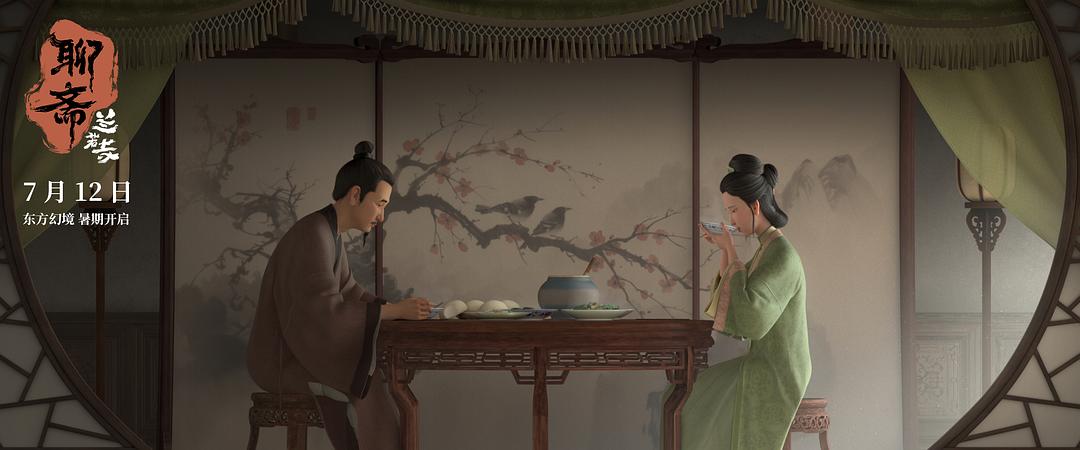
The Song Dynasty aesthetics in Painted Skin
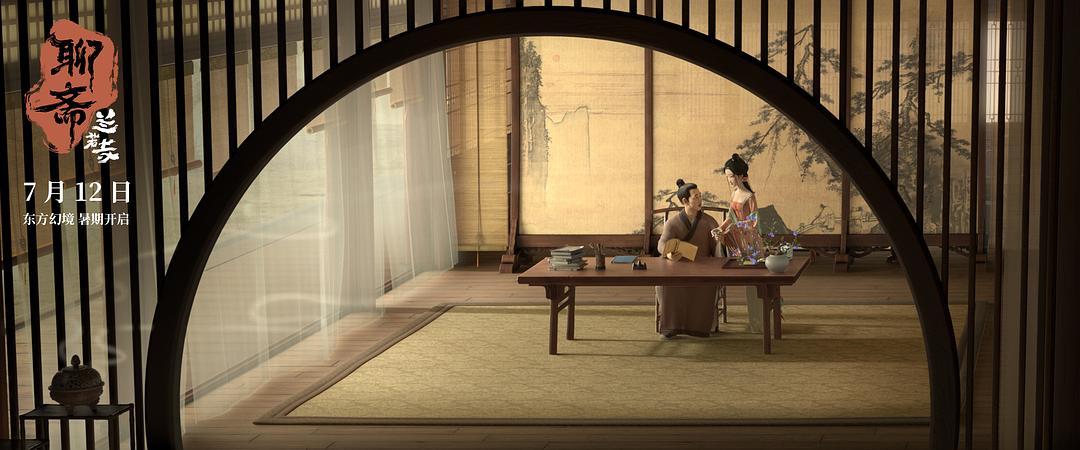
The scattered perspective in Song Dynasty paintings brings a sense of classicism
In the Song Dynasty painting style of "Painted Skin", in order to achieve the ancient painting sense of "scattered perspective", the team produced assets separately for panoramic shots. "Manually adjusting the perspective in three-dimensional space is equivalent to rebuilding a set of scenes"; Director Cui Yuemei's team initially proposed the "all-felt" plan, which made the production team estimate that "the workload is equivalent to a feature film." From the curl of the hair to the "collision" rules between the characters and props, the team needs to spend a lot of time testing the standardized process to turn the felt from an "experimental style" into a "routine operation" that can be mass-produced; the "flying problem" of "Princess Lotus" forced the technology to iterate. Because Princess Lotus needs to "grow wings and fly", the team had to redesign the motion blur algorithm-"The lotus must be able to fly, and then she has to be like a bee, and her skirt is propped up. How does she do it and how does she fly?" Song Yiyi revealed that this design alone doubled the workload of the animation department. As the finale, "The Daughter of Lu Gong" was required to "maximize the visual effects": the archway in the Huangquan scene incorporated architectural elements from the Tang and Song dynasties, and the "memory fragments" in the lanterns needed to be hand-painted frame by frame. "It is an emotional climax and must be pushed to the highest level."
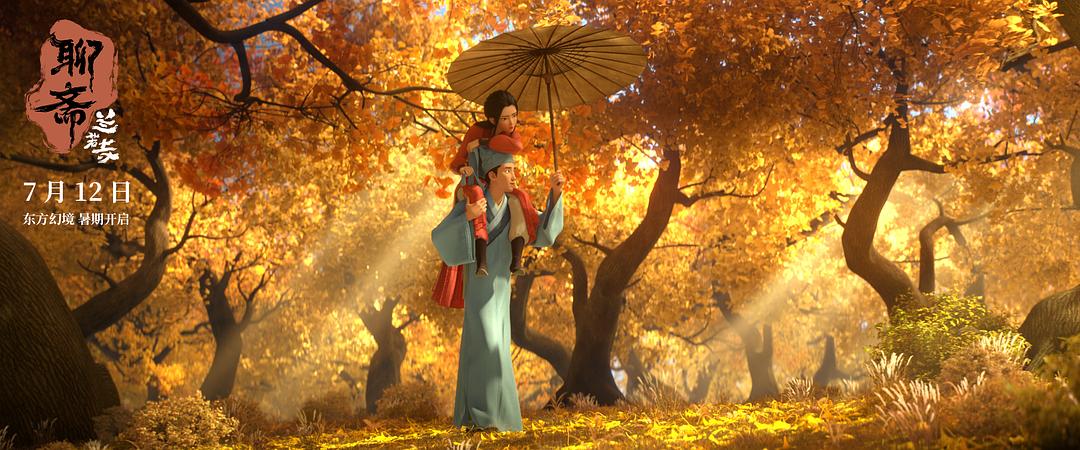
"Lu Gongnu" is the emotional climax of the whole film
Director Xie Junwei talked about the "collective creation" this time and revealed that in fact, each director achieved a more benign competition in a kind of "secret competition". "It is certain that they are competitive, which is the spirit they should have as creators." Song Yiyi talked about another distress of being a producer in this project, "They are competitive, and I have to pull them back. I have to balance these things and remind them what the focus of this part is."
After watching something good, the audience will want to watch something better.
Since its release on July 12, "Liao Zhai: Lanruo Temple" did not explode at the box office immediately. However, before the release of new films this weekend, the film achieved a reverse decline in box office and won the daily box office championship for three consecutive days in the fiercely competitive summer season, showing the potential for longer-term screening.
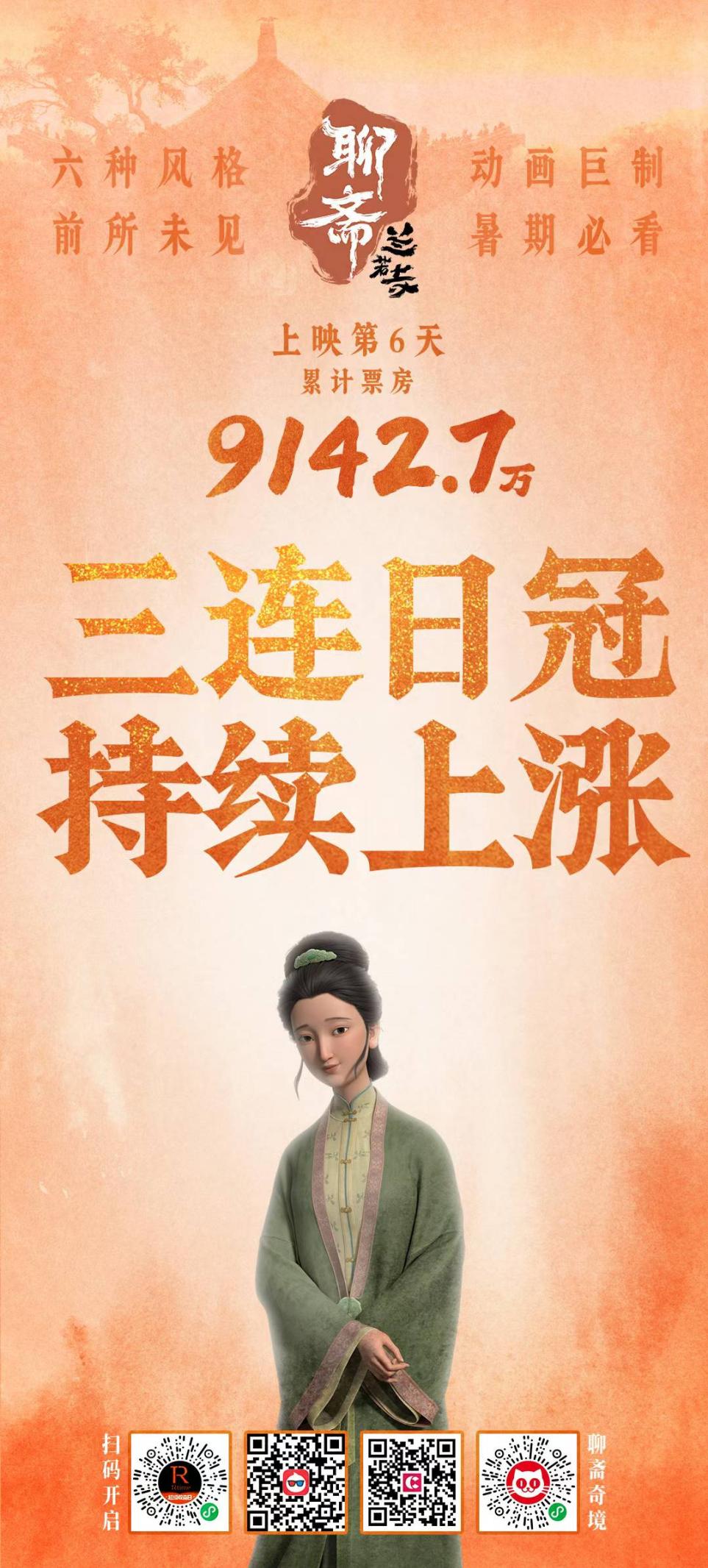
"Liao Zhai: The Lanruo Temple" topped the daily box office for three consecutive days this week
Summer is always the time for animated films to “go strong”. The previous work of the “New Culture” series by Light Chaser, “Three Thousand Miles in Chang’an”, also experienced a process of box office decline and then a step-by-step counterattack during the summer two years ago. In the first half of this year, “Nezha: The Devil Boy Conquers the Dragon King” broke through the box office ceiling and made animation the focus of the whole nation.
As a practitioner in the animation industry, Song Yiyi remembers the emotion she felt after watching "Nezha 2" alone in the cinema at the beginning of the year. "I was thinking at the time that the highest-grossing movie in China was actually an original animated film. This really touched me. It is really not easy for Chinese animation to have come this far." The public's perception of domestic animated films used to remain in the stereotype of "childish, for children", but now, the audience's perception of animation has undergone earth-shaking changes.
Song Yiyi also admitted that the success of such a "top-notch" animation has put more pressure on the entire industry, "because when the audience sees good things, they will naturally want to see better ones. Everyone in the industry will also pursue higher standards. I think animators care a lot about the audience's opinions."
It is revealed that Light Chaser has already set its sights on the overseas distribution plan of "Liao Zhai: The Deserted Temple". The team attaches great importance to the translation of English subtitles, striving to accurately convey the "Eastern concept". At the same time, they hope that the sincere emotions beneath the shell of Eastern fantasy stories can also impress overseas audiences.
